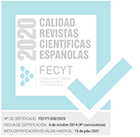Mediterranean landscapes and plant communities relationship
Resumen
From a previous landscape classification of Huelva by the Twinspan multivariate classification method, which resulted in eight landscape types, it has been proposed the hypothesis that there is a landscape types-plant communities association. The study was performed on samples of serial scrub communities, by means of a stratified sampling between landscape types. These samples were classified using both phytosociological and Twinspan methods. Through an independent process of synthesis of landscape types and community types (according to Twinspan classification), the possible association between landscapes and communities has been analysed. This analysis has been carried out by two-way contingency table between five landscape units and five plant communities. The null hypothesis that both descriptors were independent has been rejected. On the basis of the appropriate global correspondence between phytosociologic and multivariate plant community classifications, a study of the plant community variation, in accordance with the ecological characterization of the identified syntaxa, has been developed. From it has been concluded the more important role of parent material than climate variables to explain this variation. This conclusion is in agreement with the assigned role to each of them in the biogeographic scope, according to the scale of the study.
Descargas
Descarga artículo
Licencia
LICENCIA DE USO: Los artículos a texto completo incluidos en el Portal de Revistas Científicas Complutenses son de acceso libre y propiedad de sus autores y/o editores. Por tanto, cualquier acto de reproducción, distribución, comunicación pública y/o transformación total o parcial requiere el consentimiento expreso y escrito de aquéllos. Cualquier enlace al texto completo de los artículos del Portal de Revistas Científicas Complutenses debe efectuarse a la URL oficial de la Universidad Complutense de Madrid.









